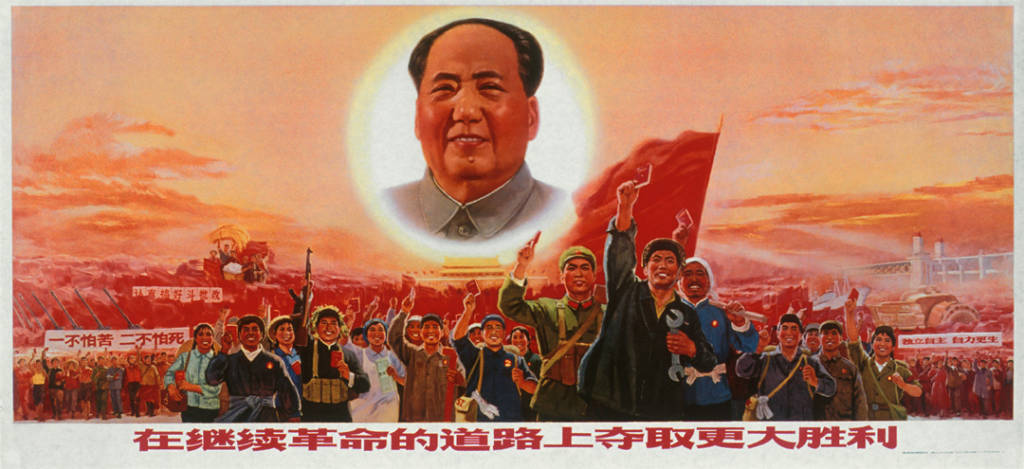The word ‘China’ today has become synonymous with violent Communism and expansionist behaviour bordering on terrorism against its maritime/ territorial neighbours. But while the civilised world shares a sense of animosity against a belligerent China, it is at best a misnomer to refer to China per se as expansionist, belligerent or even Communist.
China itself is not a rogue country, rather it is a beautiful civilisation hijacked by an evil force called the Chinese Communist Party (CCP). China has actually been a politically inward-looking civilisation for a better part of the world history, but today the CCP has occupied China and it is the Chinese Communists who are pushing China’s boundaries into other countries.
To be precise, China itself is the biggest victim of the CCP’s brutalities. No country has suffered as much at the hands of the CCP as China itself. The CCP has destroyed Chinese culture, religions, civilisation and language. And it doesn’t really come as a surprise because this is what hardline Communists do- they kill civilisations and deracinate entire generations in the name of ‘Class Wars’ and empowering the ‘Proletariat’.
It is therefore not surprising that the pre-Communism China is very different from present-day China in all aspects from politics to culture, and language to religion.
Politically, China was inward-looking and more focussed on consolidating the empire within, rather than sending expeditionary forces to other parts of the world. Take China’s historical relations with India, for example. Apart from a few aberrations, the ancient civilisations of India and China enjoyed a largely peaceful co-existence. At times, the ancient Chinese rulers even turned to Indian rulers for help against external threats from other countries.
Many famous Chinese travellers, including Fa-Hein and Hiuen Tsang, visited India in the ancient era and became a part of the shared history between India and China.
Within China, the traditional Confucian culture promoted kindness and generosity, as opposed to the Communist ‘Class Wars’. Therefore, several cultures and religions like Buddhism and Daoism prospered and found recognition within China. Traditional China was also tolerant and even encouraging of art and music, in sharp contrast to the repressive Communist regime that rules mainland China today.
The reason why China seems like a hub of human rights violations today is that China is not China anymore. Things changed quickly for China in the first half of the twentieth century. The CCP came into being in 1921, and China unfortunately got introduced to the Communist ideology.
In the middle of the Second World War, China was involved in a major conflict with Imperial Japan at that time. Japanese forces carried out relentless germ assaults on China that had caused widespread damage in the country. Between 1931 and 1944, the Kuomintang (KMT)’s Nationalist Government was preoccupied in handling the Japanese onslaught, giving the CCP an outside opportunity to stage a coup.
Mao Zedong’s CCP, therefore, toppled the KMT in 1949 and took over the ancient civilisation of China. What followed was an absolute rampage. The Chinese Communist Party has run riot ever since using indiscriminate killings, destruction and deracination to remove every sign of the ancient Chinese civilisation.
The CCP has destroyed China through meticulous planning and plotting. In the 1960s, CCP Founder, Mao Zedong launched the ‘Cultural Revolution’– a campaign to “cast away the four olds”, namely old ideas, old culture, old customs, and old habits.
CCP’s Red Guards declared “a war against the old world” and pledged to “smash all old ideas, old culture, old customs, and old habits.” The Red Guards meant what they said and soon cracked down on ancient Chinese culture, art, language and ancient temples. The CCP has managed to destroy all three Chinese religions- Buddhism, Taoism and Confucianism.
The CCP regards Buddhist temples, Taoist temples, Buddha statues and historical works of art as objects of “feudalism, capitalism, and revisionism”. Therefore, the CCP targeted some of ancient China’s most important archaeological and religious remains including the first Buddhist temple in China- White Horse Temple (or Bai Ma Temple).
China also followed a policy of linguistic homogenization destroying local Sinitic languages throughout China.
At a geopolitical level also, CCP didn’t care for the traditional inward-looking approach of China. Soon after hijacking the country, the CCP used its armed wing- the People’s Liberation Army for leading expeditions into Tibet, East Turkestan (Xinjiang) and parts of India’s Ladakh (called Aksai Chin by the CCP).
Even today, the CCP terrorises China’s neighbours in South China, East China Sea, the Himalayas and Central Asia. The CCP leads China like a brutal empire and not really as a civilised country which creates a rather poor perception of China itself.
Moreover, 1.4 billion people of China aren’t able to express how they have been virtually colonised by a brutal force called the CCP. The Communist administration cracks down on every form of dissent in the most horrific ways possible including enforced disappearances. And then the CCP is also running a massive deracination programme with its mouthpieces dominating the media circles and running relentless Communist propaganda in mainland China.
China isn’t an enemy of the world; rather it is itself a victim that needs to be liberated from the CCP. The world needs to disband the CCP if China is to grow into a peaceful and responsible power as opposed to the giant bully that it is becoming under the CCP.
